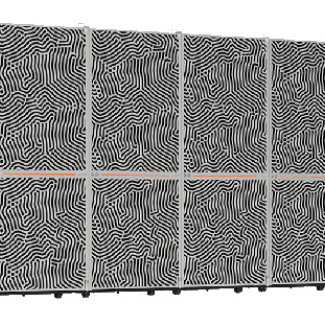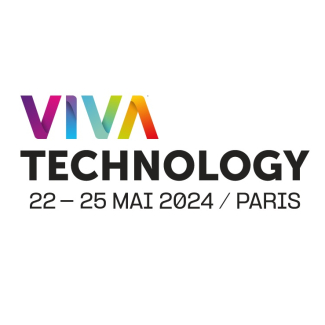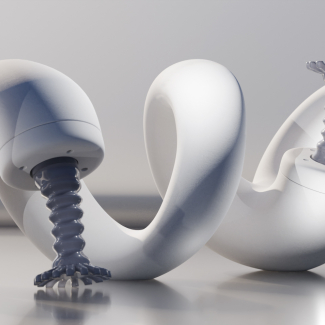
Accelerating innovation: the CNRS creates its 200th LabCom
|
• The CNRS is celebrating the creation of its 200th active joint laboratory bringing together the organisation and its academic partners with a company. |
To mark the creation of the 200th active joint laboratory bringing together the CNRS and its partners with companies, the organisation is taking stock of one of the most accomplished and sought-after collaborations between the worlds of public research and industry. With a joint laboratory created every fifteen days, and the hundreds of innovations that have emerged from them, these flexible structures have proved crucial in removing scientific and technological obstacles. They make it possible to conduct ambitious basic research, and to position ourselves in relation to major industrial challenges.
In an unprecedented event at the Palais Brongniart in Paris, the CNRS is celebrating the creation of the 200th active joint laboratory bringing the organisation and its academic partners together with industry, namely TotalEnergies in this instance. The result of a decade of fruitful exchange, the Electronic Magnetic Resonance Centre for Materials and Energy was recently created by the Spectroscopy Laboratory for Interactions, Reactivity and the Environment (CNRS/Université de Lille) and TotalEnergies. It will work to identify new materials that are more sustainable, have less of a carbon footprint, and can be applied to the energy sector. It will also improve the reliability and security of solid-state batteries, as well as study the ageing of solar panels.
A preferred form of partnership research, joint laboratories have attracted 135 companies of all sizes with varying needs and resources, including large (34%), and mid-market (38%) businesses, SMBs (16%), and VSBs (12%). Some companies have trusted the CNRS and its partners on more than one occasion, being simultaneously involved in multiple collaborations: Total Energies (12 joint laboratories with the CNRS and its academic partners); Michelin and Stellantis (8 laboratories), EDF and Thales (7 laboratories), Solvay (5 laboratories), Naval Group, Saint-Gobain, CILAS - ArianeGroup - and Groupe Airbus (3 laboratories).
Joint laboratories are built around a shared scientific theme responding to both the needs of ambitious research and long-term industrial challenges, and they play the role of catalysts. The innovation that stems from these laboratories—whether disruptive or more incremental—provides added value to the product development cycle of companies. Nearly half of the research focuses on energy and materials (48%), in addition to digital technology (20%) and the life sciences (13%). Over 80 patents and 20 software programs are jointly registered each year.
Bandages that stimulate healing, fibre optics adapted to extreme environments, and pheromone diffusers to combat agricultural parasites are only a few of the concrete illustrations of these partnerships between CNRS research units and academic partners with companies. One example is the Fractory1 joint laboratory, which offers software and expertise in modelling complex geological environments in order to produce the highly-detailed knowledge of the subsoil needed for the permanent burial of nuclear waste, or the I3M laboratory2 , which uses mathematical modelling and artificial intelligence for the automated processing and analysis of images, in an effort to assist in the diagnosis and therapeutic care for pathologies of the brain, heart, and kidney.
Of the thousand joint research laboratories3 that the CNRS has with its academic partners, 144—or 12% of the units under the CNRS’s supervisory authority—have created at least one collaborative structure with the private sector. This success illustrates the need to base the relations between companies and the academic world on a structural, flexible, and enduring framework. Behind these structures4 bringing together the world of research and industry there are first and foremost human connections between individuals who respect and trust one another, and who want to join efforts over multiple years of collaboration in the form of scientific services, co-supervised theses, and collaboration contracts.
"The CNRS's core purpose is to conduct basic research at the highest international level, and to put it at the service of society. Transferring research and enhancing our attractiveness are central to our strategy. Thinking long-term to anticipate the world of tomorrow, as well as contributing to a stronger economy and industry are ambitions we share with our economic partners. Together we conceive the research projects needed to create disruptive innovation, gain and retain markets, and generate value and jobs by standing out from the competition," indicates CNRS CEO Antoine Petit.
- 1Between Itasca Consultants s.a.s, the Geosciences Rennes laboratory (CNRS/Université Rennes 1), and the Rennes Observatory of the Sciences of the Universe (CNRS/Université Rennes 1/Université Rennes 2/Inrae/Institut Agro).
- 2Created between the Mathematics and Applications Laboratory (CNRS/Université de Poitiers), the Xlim Laboratory (CNRS/Université de Limoges), and Siemens Healthineers SA.
- 3Among these, five laboratories are champions in partnership research: the Institute of Analytical and Physicochemical Sciences for Environment and Materials (CNRS/Université de Pau – Pays de l’Adour) with nine joint laboratories with companies, the CNRS's Institut P’ and Xlim laboratory (CNRS/Université de Limoges) with seven laboratories each, and the Materials Physics Group (CNRS/Institut national des sciences appliquées de Rouen/université de Rouen Normandie) and LAAS-CNRS with four each. Ten other laboratories have also created joint structures with companies.
- 4The designation "laboratoire commun" (joint laboratory) includes bilateral joint laboratories, the LabComs of the French National Research Agency (ANR), ANR and non-ANR industrial chairs, joint research teams with industry, joint research units (UMR), and industry-related international research laboratories (IRL).

